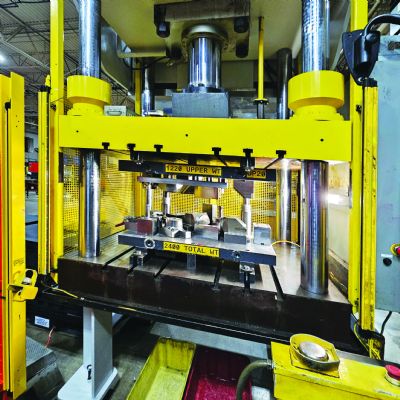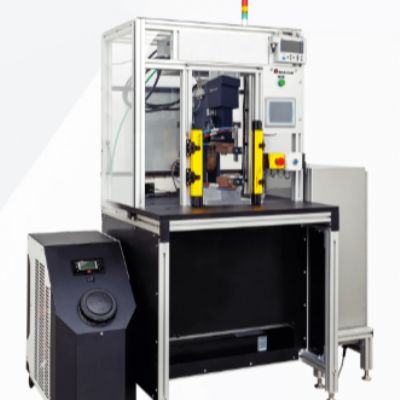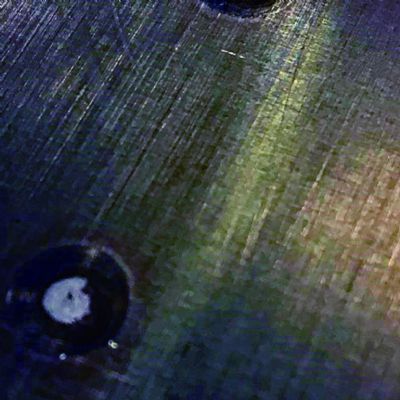Projection welding concentrates the welding current onto dimples, ridges or other embossments on the surface of one of the workpieces. When these embossments, or projections, heat up, under the applied force of the electrodes, they collapse and form weld nuggets. This welding process finds use for connecting studs, nuts or brackets on individual sheets, or for joining two parts.
Flash/butt welding is a special process that concentrates a high current density at small contact points between the workpieces, and finds use for welding rebar, bandsaw blades, railroad tracks and tubing. It’s also used for joining electrical contacts such as copper to aluminum, and the aeronautical industry employs flash/butt welding to join rings for jet engines made from temperature-resistance metal alloys, and to weld landing-gear assemblies.
Workpiece-Variation Challenges
Advancements in automation have increased RW quality, efficiency, and consistency. Still, shops face daily challenges that can threaten quality and consistency, chief among them being workpiece variations. These variations relate to workpiece thickness, how the sheet metal or other parts fit together, and the size of the welds—influenced by the weld nugget’s proximity to one another on the adjoining materials. Process variation can occur due to differences in material surface resistance, shunting, material contamination, and poor part fitup.
Shunting affects the size and consistency of consecutive welds and occurs when placing welds closely together. As a result, part of the current is diverted through the path created from the existing weld, which causes a reduction of current, and thus heat, at the site of the weld being produced. The result: an undersized weld.
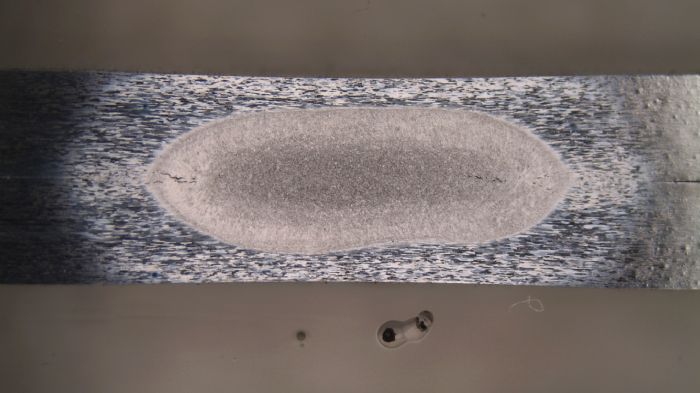 The buildup of surface contamination from oxidation on steels, aluminum and nickel alloys generally increases the resistance of the workpiece material and can have detrimental effects on the welding process if not appropriately addressed. When this type of variability occurs, the use of conventional controls to regulate current can create more process variability than when no weld-current regulation is used. Why? The regulating action of the control becomes the reason for generating excessive heat, so rather than reducing variability, the regulating action of the control overheats the part, potentially resulting in expulsion of molten material and electrode damage.
The buildup of surface contamination from oxidation on steels, aluminum and nickel alloys generally increases the resistance of the workpiece material and can have detrimental effects on the welding process if not appropriately addressed. When this type of variability occurs, the use of conventional controls to regulate current can create more process variability than when no weld-current regulation is used. Why? The regulating action of the control becomes the reason for generating excessive heat, so rather than reducing variability, the regulating action of the control overheats the part, potentially resulting in expulsion of molten material and electrode damage.
Also, poor fitup—such as when a workpiece is bowed or otherwise warped—can cause the weld current to not flow properly through the components, which can result in no weld, an undersized weld, and expulsion.
Standard Quality-Control Procedures
Attempts to minimize the effects of workpiece variations usually are achieved through careful material preparation and inspection. Operators typically will make manual adjustments to weld heat. Still, shops must implement evaluation standards throughout the process.
Traditionally, periodic destructive testing has been the primary method of evaluating weld quality. Destructive tests can identify if a change has occurred in the welding-machine setup. However, because each weld cannot be subjected to destructive scrutiny, unacceptable welds may escape detection. Such tests will not address or correct the root causes of undersized welds, excessive heating, expulsion or material-surface contamination. In addition, poor-quality welds can occur randomly. And, destructive tests also can be costly and time consuming.
Some RW operations employ monitoring systems to measure welding response variables such as nugget expansion and welding current. Here, upper and lower limits are set for expansion and current, and the system can send a notification should values exceed these limits so that the weld is rejected. Systems that effectively monitor enough variables can detect and prevent problem welds from leaving the factory.
Operations that employ monitoring systems to prevent problem welds from leaving the factory often expect to reduce scrap, only to wind up producing more scrap since the monitoring system leads to the rejection of more welds. These shops will discover that more variability existed than previously known, and, unfortunately, the monitors put in place cannot instantly take the corrective actions required during each weld.
In summary, monitoring systems alone do not improve the consistency of any of the welds produced.
Adaptive Controls to the Rescue
To address the wide range of workpiece variations more effectively, shops must be able to monitor multiple process variables simultaneously, and instantly react to counteract the effect of the variations. This is readily achieved with properly equipped adaptive RW-process controls. Such controls automatically adjust to the conditions of each weld by detecting unwanted conditions, employing the appropriate decision-making process, and then taking appropriate action to correct and/or compensate for the conditions as each weld is produced. Adaptive control improves the consistency of all welds produced and reduces the incidence of problem welds. When a problem is so severe it cannot be corrected, the adaptive control notifies the operation and produces a record of the condition.
Adaptive controls, for example, can detect variations in material coating and surface resistance, and then take the appropriate corrective action. In the case of a higher-than-normal workpiece resistance (indicating surface contamination), the control immediately reduces the amount of heat input—just enough to burn off the surface contamination in a controlled fashion. When the contamination has been reduced to acceptable levels, the welding process completes to its original specifications.
The same adaptive control can address poor fitup issues as well, by reducing heat input to soften the parts just enough to get them to fit flush together before increasing the heat to complete the weld.
Adaptive controls also can compensate for shunt conditions and flattening of the electrodes. As the weld forms, if the control detects a lower-than-normal rate of thermal expansion, it will automatically increase the amount of weld heat to compensate.
Case Study
NASA Langley Research Center successfully employed an adaptive RW control (from WeldComputer) to address inherent oxidation buildup on aluminum-lithium alloys when developing procedures for fabricating the fuel casing on the Space Shuttle. It was unable to adequately control the welds using its existing aerospace-quality welding system.
Aluminum-lithium alloys, much lighter than conventional aluminum-based alloys, find favor for aircraft applications. However, they tend to oxidize quickly, with surface conditions changing in just a few hours after cleaning. Rather than rendering the alloys unusable, the research center’s engineering team used WeldComputer adaptive controls to produce consistent welds over a two-week period before the material had to be cleaned again.
Think Fast, and Take Corrective Action
It takes hundreds of decisions every millisecond to instantly detect a multitude of different process conditions that can affect quality in spot, seam, projection and flash-butt RW applications. Only a multivariable adaptive control with such decision-making capacity can react quickly enough to detect and take the required corrective actions to control the consistency of every weld.
Proper deployment of monitoring and adaptive controls now allows manufacturers to achieve quality-assurance standards far beyond what traditionally has been accepted using conventional controls and performing destructive tests. This reduces manufacturers’ dependence on other competing joining processes that often cost more and result in lower throughput and reduced energy efficiency. MF
View Glossary of Metalforming Terms
See also: Weldcomputer Corp.
Technologies: Welding and Joining







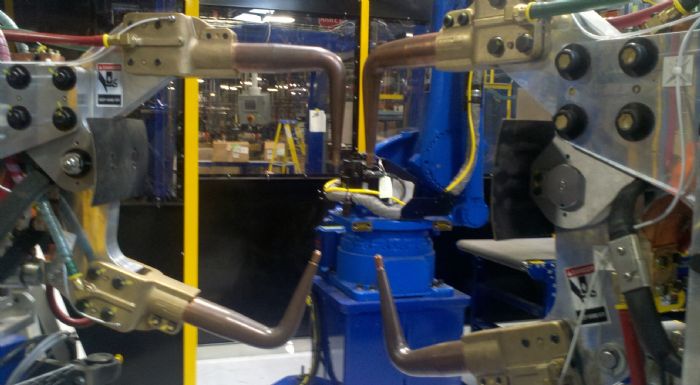 Here we’ll focus specifically on one key challenge facing users of RW: workpiece variation. That is, the interface between workpieces and the electrode-to-workpiece interactions for heat generation.
Here we’ll focus specifically on one key challenge facing users of RW: workpiece variation. That is, the interface between workpieces and the electrode-to-workpiece interactions for heat generation. 